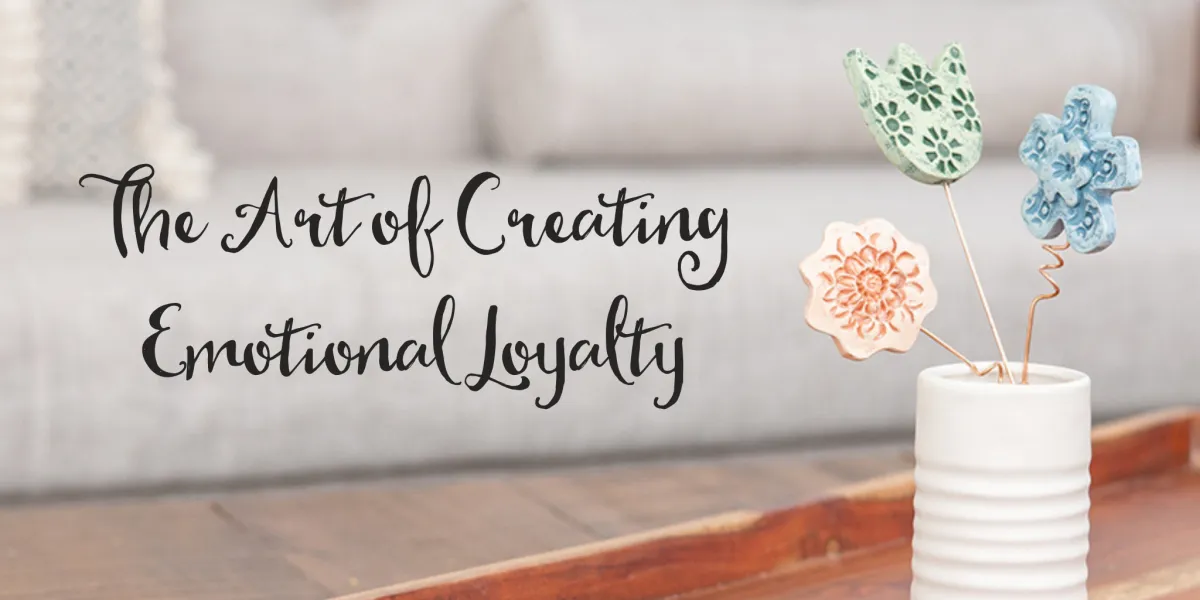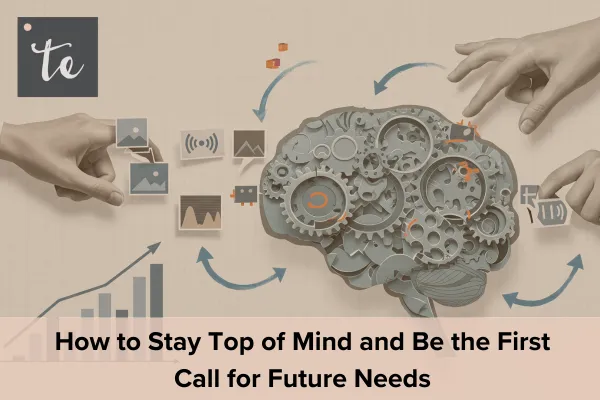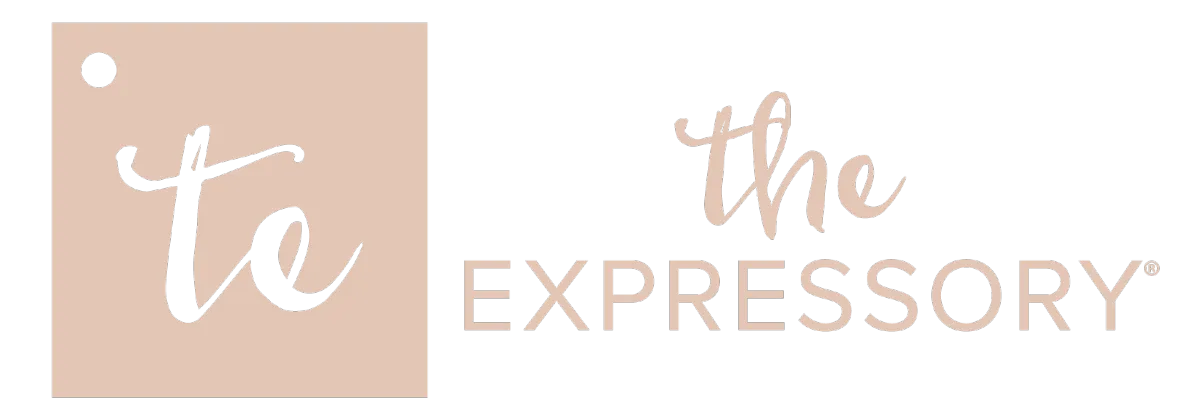
What Swimming Teaches Us About Team Relationships
In my latest video, I break down how swimming teaches us the importance of these relationship-building efforts and the specifics of what we as leaders need to nurture with our teams.
Holiday Gift Insights - What Everyone Else Is Doing
In an effort to simplify the decision-making process, we're sharing some of the trends we've seen with gifting over the years. We're even sharing our best seller and why that gift had such success.
What Makes A Successful Holiday Gift? The Travel Bag Edition
Last year we had the opportunity to work with one of our clients in the travel and tourism space to design an experience that delivered their highest engagement yet.

How to Stay Top of Mind and Be the First Call for Future Needs
You know the feeling. You’re catching up with a longtime client, and they casually mention they hired someone else for a service you offer. One you love doing. One that could’ve really helped them. They say something like, “Oh, I didn’t even think of you for that!” And while you nod and smile, inside you're thinking: How could they not think of us?
The pain here is real, and it sounds like this: “Our clients aren’t using all of our services. I don’t know how to grow them because they don’t think of us.”
But here’s the truth: It’s not their job to remember everything you do. It’s yours to gently, consistently, and helpfully remind them. When clients are in the weeds of their daily world, they only recall the part of you they’ve interacted with. Without strategic reminders, even your happiest clients can overlook the full breadth of your expertise.
The good news? This isn’t a sales problem. It’s a relationship engagement opportunity
Why Staying Top of Mind Matters
You’ve probably heard the saying, “Out of sight, out of mind.” In business, it’s more like, “Out of context, out of opportunity.” Clients will happily stay in their lane unless you help them merge with others. When you implement an engagement strategy that reminds them of your other services (in a way that’s helpful, not pushy), you not only grow client value, but you also increase referrals.
Why? Because people aren't going to refer you for an offering they're not sure you have.
A Real-World Example
Let’s take a financial advisor as an example. Imagine a client who came to you for retirement planning. You’ve done a solid job. They’re trusting you with their 401 (k) and investments. But they don’t know (or remember) that you also offer tax strategy support, estate planning coordination, and long-term care planning.
Now let’s say they’re struggling to get their estate in order. Instead of calling you, they ask their friend for a referral to an attorney. Not because they don’t trust you, but because they didn’t know you could help. A missed opportunity, all because they didn’t think of you.
This is where strategic touchpoints can help. Your job isn’t to sell them something new every quarter. It’s to serve them consistently, and through that service, reveal the full range of how you can help.
The Four Touchpoints of a Strong Engagement Strategy
At The Expressory, we often say that the best engagement strategies are both consistent and caring. Here’s what a best-in-class touchpoint plan might look like for a financial advisor or similar service provider.
Holiday or Birthday Appreciation Gift (Just Because)
This is your relationship “thank you” with no strings attached. Whether it’s a festive treat in December or a birthday card with a handwritten note, this reminds your clients that they’re seen and valued as a person, not just a revenue line.
A Small, Ad-Hoc Recognition Gift
Make sure your team is always listening for what’s happening in their world. Are you following them (or their company if you’re B2B) on any of the social platforms? Pay attention to news or changes in their everyday lives. This is where you can leverage The Expressory's Six Strategic Storylines™ to create a timely touchpoint of acknowledgement (click here if you need a refresher on the different storylines). Maybe you send something thoughtful when a client’s kid heads off to college, or they launch a new business. These touchpoints say, “I see you,” and deepen emotional loyalty.
A Helpful Physical Resource (That Educates Subtly)
This is your opportunity to gently plant the seed about another service.
Example: Send a “Personal Insurance Audit Worksheet” with a note:
"Just wanted to make sure you’ve got all the right coverage for this stage of life. This quick checklist can help highlight any gaps. Let me know if questions come up."
This educates while sparking curiosity. No pressure, no pitch. Just value.
Another Educational Touchpoint (Tied to Their Goals):
Maybe it’s a “Retirement Lifestyle Vision Worksheet” or a tax planning infographic that shows smart ways to diversify withdrawals. These resources are helpful in themselves but also signal: “Hey, I can help with this too.”
Put together, these four touchpoints cover emotional connection, thoughtful acknowledgment, and practical value. All without being salesy. It keeps you top of mind and a favorite resource to share with others.
The Referral Bonus: Why This Works Beyond Upselling
Speaking of others, in any of these mailings, you could also drop in a second copy of the resource. In your message, you can say, “I’ve included an additional copy to share with a friend if you know of someone else who needs to see this.” If they find an opportunity to share, it makes them look good. It makes them feel like a person in the know, and you are positively connected to that feeling.
When your clients feel cared for and consistently supported, they naturally become your biggest advocates.
That ad-hoc gift you sent that was tied to their daughter’s graduation? It probably gets mentioned at the next family gathering. "My advisor sent the sweetest note and gift; you’d love working with them.” Strategic engagement doesn't just deepen relationships, it multiplies them.
Need a Few Resource Ideas? We’ve Got You
If you’re not sure what “physical resources” could look like, here are a few proven examples you could print, send, or email:
Financial Industry:
Insurance Audit Worksheet: Spot gaps in life, disability, or long-term care coverage.
Spending Snapshot Report: A quick glance at income vs. expenses to find savings opportunities.
Estate Readiness Checklist: Helps them evaluate if their will, POA, or trusts still make sense.
Care Planning Guide: Prompts future-focused conversations about aging and health.
Retirement Lifestyle Vision Worksheet: Gets them dreaming, and planning, for what’s next.
Money Mindset Quiz: A fun, engaging tool that personalizes your advice.
Marketing and Advertising Industry:
Brand Voice Alignment Quiz: Helps ensure their messaging tone matches their updated visual identity.
Homepage Clarity Checklist: Points the client to where they might have gaps in messaging and design that could confuse or turn away visitors.
Content Calendar Templates: Kickstart momentum with templates to help them plan their content across platforms.
Storytelling Prompt Cards: Get them inspired to share their brand’s story, values, and personality.
Lead Nurture Journey Map: Sketch the client experience from first click to conversion, and spot opportunities.
If you fall outside of those industries, hopefully those examples provide ideas for how to create something similar for your own company. Each one serves a purpose on its own. And each one quietly reminds the client that you’ve got more to offer.
Your clients don’t automatically remember everything you do. So, it’s up to you to create thoughtful, consistent touchpoints that keep you visible, valuable, and top of mind. By combining helpful resources, small gestures of recognition, and educational moments, you can transform ordinary interactions into memorable experiences that build loyalty and encourage referrals.
Strategic customer engagement isn’t about pushing a sale. It’s about showing you care, celebrating progress, and subtly reminding clients of the full range of ways you can support them. If you’re ready to turn these ideas into action, we can help you design a plan that fits your business and your clients’ needs. Schedule a one-on-one or join our next Q&A session and start making every client interaction count.
Reflect & Rebuild: 5 Key Questions for Leaders
To assess how well you're using engagement to stay top of mind, start here:
Do my clients know the full range of services I offer, or just the ones they’ve experienced?
Have I created a structured engagement plan that includes more than holiday cards?
Am I using at least one touchpoint a quarter to reinforce value and stay visible?
Do my resources feel genuinely helpful? Or do they read like sales materials?
How often are my clients referring me without prompting?
Whether you’re ready to build your quarterly plan or just want to explore what “not-salesy client education” could look like for you, let’s talk. Join us for an upcoming Q&A session or schedule time to talk.
FAQs
What is an engagement strategy and why does it matter?
An engagement strategy is a plan for how you consistently build connections with clients in meaningful ways. Using customer engagement strategies helps you stay top of mind, build trust, and make a lasting impression without being pushy.
How can I stay top of mind with clients?
Regular, thoughtful touchpoints—like helpful resources, small acknowledgment gifts, or educational content—remind clients of the full range of services you offer. This approach strengthens relationships and encourages referrals.
What are some effective customer engagement strategies?
Focus on consistent, caring actions: celebrate milestones, provide useful resources, and acknowledge client goals. Marketing engagement strategies that combine emotional connection with practical value help clients see you as a go-to resource.
How can I make a lasting impression with clients?
Provide moments of genuine value and personalization that connect to what matters most to them. Thoughtful gestures (like a note celebrating progress in a goal that’s important to their world) turn ordinary interactions into meaningful, memorable experiences. When your actions reflect what they care about, it strengthens the foundation of your relationship.
How do engagement strategies improve customer lifetime value?
By keeping clients aware of all your offerings and consistently showing you care, you naturally encourage repeat business, referrals, and deeper partnerships. Integrated engagement strategies transform short-term interactions into long-term relationships.
Can engagement strategies include upselling without feeling salesy?
Yes. Customer service upselling techniques work best when they provide real value. Subtle resources or educational touchpoints can introduce additional services while keeping the focus on helping the client succeed.
Address:
1500 S. Sylvania Ave #106
Sturtevant WI 53177
Phone:
414.243.8971

